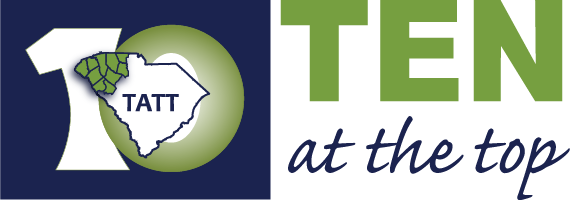by Dean Hybl, Executive Director, Ten at the Top
The beginning of a new decade always provides an opportunity to look ahead and forecast what issues and opportunities are on the horizon.
As we exit a decade that began with 11+ percent unemployment in South Carolina and enter one with an unemployment rate under 3 percent, there is no

College students training at BMW Manufacturing
question that our priorities and areas of focus for 2020 and beyond will be quite different than they were ten years ago.
Over the last couple of years, we have started to see a shift from a primary focus on attracting jobs for available workers to developing, attracting and retaining talent to fill available jobs. We also now must place greater emphasis on reducing the barriers to employment for people living in the Upstate who are unemployed or under-employed.
There are many barriers impacting the ability for some residents to succeed, but below are three of the primary ones:
- Transportation/Mobility
- Education/Skill Training
- Cost of Housing outpacing wage increases
While all three of these issues are critical and justifiably have many Upstate entities working to mitigate them, at Ten at the Top we have spent the last two years working most specifically around bringing together stakeholders from across the region to address issues around transportation and mobility.
It is estimated that 6% of all households in the Upstate (roughly 37,000 households) have no access to a vehicle. In Greenville County alone, 24% of all residents (roughly 125,000 people) reported that they have some challenges with securing dependable transportation to get to jobs, school or other locations.
With the unemployment rate now near a record low, this barrier to employment doesn’t just impact the individuals that do not have access to transportation, it impacts the entire Upstate economy.
Over the last decade the Upstate secured more than $17 billion in new corporate investment. The jobs created through that investment are a significant reason for our current low unemployment.
 If we are to continue to grow the economy in the Upstate, removing lack of transportation as a barrier for potential employees is critical. In addition, mitigating congestion, regular road maintenance and enhancing the general movement of people and goods across the Upstate are other elements that must be addressed to holistically improve mobility in the region.
If we are to continue to grow the economy in the Upstate, removing lack of transportation as a barrier for potential employees is critical. In addition, mitigating congestion, regular road maintenance and enhancing the general movement of people and goods across the Upstate are other elements that must be addressed to holistically improve mobility in the region.
While studying the challenges here in the Upstate and looking at the approaches in other communities across the country, one thing has been certain: there is no silver bullet to fix transportation and mobility issues.
Instead, there is a need for a multiple front approach with different elements of mobility each playing a vital role in reaching success.
An essential action was taken in 2017 with the increase of the state gas tax to help ensure there is sufficient funding to repair and maintain roads within the state. However, that was simply the first step towards improving mobility.
Improving public transportation, providing regional transportation connectivity, utilizing technology to mitigate congestion and increasing opportunities for alternative transportation such as biking and walking are among the other elements needed to improve mobility and increase access to transportation.

Upstate Mobility Alliance Director Michael Hildebrand
One recommendation that came out of our study of mobility was the need for a convening group to connect the many different mobility efforts happening across the region. That has led to the creation of the Upstate Mobility Alliance, which officially began efforts in January following the hiring of Michael Hildebrand as the Alliance Director.
The role of the Mobility Alliance is to help continue to grow collaboration amongst the more than two dozen entities that play a role in the movement of people and goods across the Upstate so that we are maximizing the limited resources within our region and leveraging the capabilities of all who are part of our mobility spectrum.
As a sign of what is possible when we work together and our corporate partners invest in our region, the Michelin Corporate Foundation has committed $825,000 to enhance mobility in the Upstate through a grant awarded to the Upstate Mobility Alliance and Greenlink to help support increased access to public transportation.
It is our hope and expectation that this will be just the first of many announcements in the near future of how we can leverage public-private partnerships to reduce access to transportation as a barrier to economic success for all individuals and businesses in the Upstate.
Check out the Upstate Mobility Alliance (www.UpstateMobilityAlliance.org) to learn how you can become involved in enhancing mobility in the Upstate.
